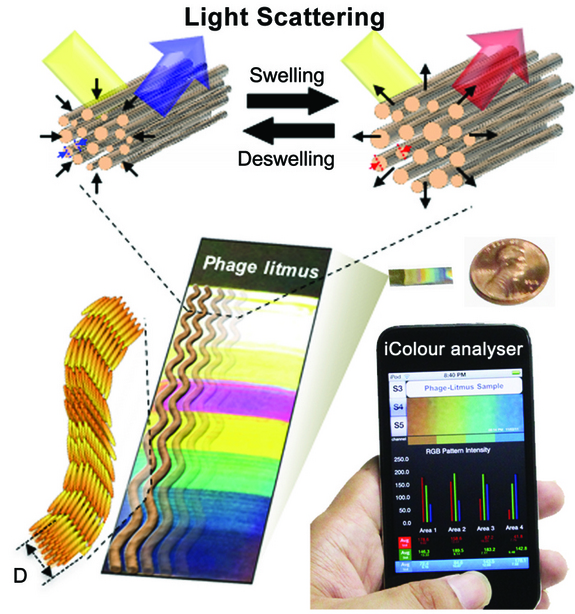Bioengineers at the University of California, Berkeley (UC, Berkeley) drew inspiration from the fact that turkey’s skin color changes when exposed to chemicals, a feature incorporated in the biosensors developed by them to detect toxins or airborne pathogens. The biosensor mimics the skin on a turkey’s head, changing color from red to blue when exposed to toxins, thanks to the bundled collagens interspersed with a dense network of blood vessels. Also, the uninitiated may note that it’s this color-changing ability that has bestowed upon the turkeys the name ‘seven-faced birds’ in Japanese and Korean.

Depending on whether the turkey is excited or angry, the spacing between the collagen fibers changes as blood vessels swell or contract, and this affects how the light is scattered altering the colors. Berkeley researchers studied this feature to create biosensors which would detect volatile chemicals. Bioengineering Professor Seung-Wuk Lee said- “In our lab, we study how light is generated and changes in nature, and then we use what we learn to engineer novel devices.” The researchers have created a smartphone application called i-Color Analyzer, showing that the image snapped from the mobile of the sensor’s color bands could help in identifying toxins of interest.
Lee added- “Our system is convenient, and it is cheap to make. We also showed that this technology can be adapted so that smartphones can help analyze the color fingerprint of the target chemical. In the future, we could potentially use this same technology to create a breath test to detect cancer and other diseases.”
While reproducing the turkey-skin features, Lee and team employed a method wherein they had nanostructures act like collagen fibers. They found a way to get M13 bacteriophages, benign viruses shaped such that they closely resembled collagen fibers, to self-assemble into easily fine-tunable patterns. The biosensors could even detect changes in relative humidity, ranging from 20 percent to 90 percent, turning redder with moister air and bluer with drier air.
Future applications may include breath test to detect cancer and other diseases.
Bioengineers at the University of California, Berkeley (UC, Berkeley) drew inspiration from the fact that turkey’s skin color changes when exposed to chemicals, a feature incorporated in the biosensors developed by them to detect toxins or airborne pathogens. The biosensor mimics the skin on a turkey’s head, changing color from red to blue when exposed to toxins, thanks to the bundled collagens interspersed with a dense network of blood vessels. Also, the uninitiated may note that it’s this color-changing ability that has bestowed upon the turkeys the name ‘seven-faced birds’ in Japanese and Korean.
Depending on whether the turkey is excited or angry, the spacing between the collagen fibers changes as blood vessels swell or contract, and this affects how the light is scattered altering the colors. Berkeley researchers studied this feature to create biosensors which would detect volatile chemicals. Bioengineering Professor Seung-Wuk Lee said- “In our lab, we study how light is generated and changes in nature, and then we use what we learn to engineer novel devices.” The researchers have created a smartphone application called i-Color Analyzer, showing that the image snapped from the mobile of the sensor’s color bands could help in identifying toxins of interest.
Lee added- “Our system is convenient, and it is cheap to make. We also showed that this technology can be adapted so that smartphones can help analyze the color fingerprint of the target chemical. In the future, we could potentially use this same technology to create a breath test to detect cancer and other diseases.”
While reproducing the turkey-skin features, Lee and team employed a method wherein they had nanostructures act like collagen fibers. They found a way to get M13 bacteriophages, benign viruses shaped such that they closely resembled collagen fibers, to self-assemble into easily fine-tunable patterns. The biosensors could even detect changes in relative humidity, ranging from 20 percent to 90 percent, turning redder with moister air and bluer with drier air.
Future applications may include breath test to detect cancer and other diseases.